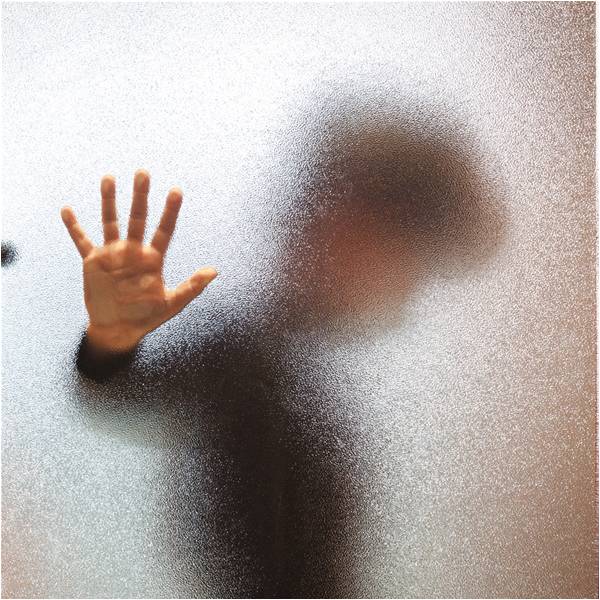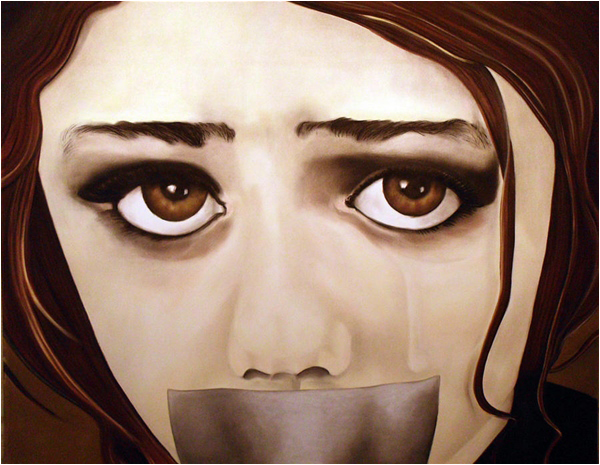
An educational institution is meant to symbolize a safe environment for children outside the protective domain of the house. It is here that children spend a bulk of their time away from their parents’ supervision. While there is generally a sense of assurance on the part of parents regarding a child’s safety within a school, parents may have tangible reasons to remain circumspect.
Alarming incidents of child sexual abuse have been reported at schools which expose a minor’s vulnerability to danger at even those places where such an incident is least expected.
Earlier this month reports surfaced in the media regarding a thirteen year old girl in Faisalabad who was raped by her school teacher in a classroom after her school ended. The male teacher called the female student to the classroom and overpowered her, thereafter threatening her with dire consequences if she informed anyone of the incident.
A UNICEF report on ‘Violence against Children’ published in 2006 outlines that for various social and cultural reasons, children and adolescents suffer violence at home and in schools. The report concludes that children and adolescents are abused precisely in those spaces and places that should offer them protection, affection, developmental stimulation, shelter and rights.
Lahore-based psychologist Jasmyn Rana who has a background in working with victims of sexual abuse reports that the perpetrator of abuse is usually someone whom parents trust with the children.
‘’Most of the cases I’ve dealt with involve a child being abused by a trusted person – these range from family members, to teachers, neighbours and hired help. Sadly most children who attempt to confide in their parents about the abuse are often told to remain silent and overlook the issue. These children spend their lives suffering in that silence.’’
The parent-child relationship is a large determining factor in shaping a child’s decision to report an experience of abuse. A communication gap tends to make a child feel wary of confiding in a parent owing to a lack of trust which gives rise to fears of embarrassment and in some cases even guilt.
A victim who chose to remain anonymous reported that as a child he was not spoken to by his parents or educationists about child molestation and had to bear the brunt of sexual abuse at the hands of his Quran tutor and later by the staff members of his school. “I blame not being able to speak up about this on the fact that I never thought anyone would back me up or believe me. It is important for parents to tell their children that they will protect them and take a stand for them”.

Jasmyn Rana states that ‘’in our culture many parents feel that by being dismissive of the incident and minimizing it, they can reduce their child’s trauma. This is, in fact, the opposite of what is true and will result in the child feeling unsafe and unprotected by their parents as well as not being able to learn appropriate boundary setting.’’
According to the Islamabad based NGO ‘Sahil’ that works exclusively on the issue of child sexual abuse and the exploitation of children, the ratio of children abused by their teachers in Pakistan has increased by more than 8 times from the year 2007 to 2011. The NGO’s report on the trends in reported cases of child abuse reveal that authority figures in educational institutions embroiled in such acts exploit their position of dominance, instill fear in children and render it difficult for them to report abuse and seek help.
The abuse meted out against children in educational institutions though may not just emanate from staff members. Fellow students are often the offenders and a space such as a boarding house where children are in an intimate setting and often unsupervised, might present a ripe environment for sexual abuse. The culprit in this scenario may either be seeking sexual gratification or asserting power and control as a senior student over a junior one.
[quote]Schools were identified as the third most frequent areas of abuse in the category of 'closed places' where abuse tends to occur[/quote]
A witness of such an instance of abuse at the hostel of an elite public school in the country related the following experience: ‘‘Something that will never escape me is my horrific experience at an all-boys boarding school. It is something that has scarred me to this day. I was forced into seeing graphic images of boys in their early teens getting sexually exploited by their fellow seniors. Being a 14 year-old at the time, I was blackmailed into keeping mum about the matter or else suffer severe repercussions.’’
According to Sahil’s statistics on child abuse recorded in 2013, schools were identified as the third most frequent areas of abuse in the category of ‘closed places’ where abuse tends to occur.
In a world where children face imminent dangers of sexual exploitation from adults and older children in their educational institutions, it is imperative to have stricter checks and balances to foster a more secure environment for them. Furthermore, counseling by trained experts in schools not only would help create awareness about the grave dangers youngsters face from sexual predators but would also work towards cultivating healthier peer to peer relations. This could in turn reduce the occurrence of sexual abuse between students. Counselors could co-opt parents in this process, educating them about identifying behavioral changes which may be an indication of a child getting victimized. The counselors would also be able to encourage parents to develop a relationship of trust with their child whereby the latter is able to express his or her emotional issues. Workshops on child abuse have already started in some private schools in Pakistan where children of different age brackets are apprised about the phenomenon. Parents and school authorities must therefore empower children to have the confidence to resist any inappropriate sexual overtures and to report to relevant authorities in the event of such an incident taking place.
Alarming incidents of child sexual abuse have been reported at schools which expose a minor’s vulnerability to danger at even those places where such an incident is least expected.
Earlier this month reports surfaced in the media regarding a thirteen year old girl in Faisalabad who was raped by her school teacher in a classroom after her school ended. The male teacher called the female student to the classroom and overpowered her, thereafter threatening her with dire consequences if she informed anyone of the incident.
A UNICEF report on ‘Violence against Children’ published in 2006 outlines that for various social and cultural reasons, children and adolescents suffer violence at home and in schools. The report concludes that children and adolescents are abused precisely in those spaces and places that should offer them protection, affection, developmental stimulation, shelter and rights.
Lahore-based psychologist Jasmyn Rana who has a background in working with victims of sexual abuse reports that the perpetrator of abuse is usually someone whom parents trust with the children.
‘’Most of the cases I’ve dealt with involve a child being abused by a trusted person – these range from family members, to teachers, neighbours and hired help. Sadly most children who attempt to confide in their parents about the abuse are often told to remain silent and overlook the issue. These children spend their lives suffering in that silence.’’
The parent-child relationship is a large determining factor in shaping a child’s decision to report an experience of abuse. A communication gap tends to make a child feel wary of confiding in a parent owing to a lack of trust which gives rise to fears of embarrassment and in some cases even guilt.
A victim who chose to remain anonymous reported that as a child he was not spoken to by his parents or educationists about child molestation and had to bear the brunt of sexual abuse at the hands of his Quran tutor and later by the staff members of his school. “I blame not being able to speak up about this on the fact that I never thought anyone would back me up or believe me. It is important for parents to tell their children that they will protect them and take a stand for them”.

Jasmyn Rana states that ‘’in our culture many parents feel that by being dismissive of the incident and minimizing it, they can reduce their child’s trauma. This is, in fact, the opposite of what is true and will result in the child feeling unsafe and unprotected by their parents as well as not being able to learn appropriate boundary setting.’’
According to the Islamabad based NGO ‘Sahil’ that works exclusively on the issue of child sexual abuse and the exploitation of children, the ratio of children abused by their teachers in Pakistan has increased by more than 8 times from the year 2007 to 2011. The NGO’s report on the trends in reported cases of child abuse reveal that authority figures in educational institutions embroiled in such acts exploit their position of dominance, instill fear in children and render it difficult for them to report abuse and seek help.
The abuse meted out against children in educational institutions though may not just emanate from staff members. Fellow students are often the offenders and a space such as a boarding house where children are in an intimate setting and often unsupervised, might present a ripe environment for sexual abuse. The culprit in this scenario may either be seeking sexual gratification or asserting power and control as a senior student over a junior one.
[quote]Schools were identified as the third most frequent areas of abuse in the category of 'closed places' where abuse tends to occur[/quote]
A witness of such an instance of abuse at the hostel of an elite public school in the country related the following experience: ‘‘Something that will never escape me is my horrific experience at an all-boys boarding school. It is something that has scarred me to this day. I was forced into seeing graphic images of boys in their early teens getting sexually exploited by their fellow seniors. Being a 14 year-old at the time, I was blackmailed into keeping mum about the matter or else suffer severe repercussions.’’
According to Sahil’s statistics on child abuse recorded in 2013, schools were identified as the third most frequent areas of abuse in the category of ‘closed places’ where abuse tends to occur.
In a world where children face imminent dangers of sexual exploitation from adults and older children in their educational institutions, it is imperative to have stricter checks and balances to foster a more secure environment for them. Furthermore, counseling by trained experts in schools not only would help create awareness about the grave dangers youngsters face from sexual predators but would also work towards cultivating healthier peer to peer relations. This could in turn reduce the occurrence of sexual abuse between students. Counselors could co-opt parents in this process, educating them about identifying behavioral changes which may be an indication of a child getting victimized. The counselors would also be able to encourage parents to develop a relationship of trust with their child whereby the latter is able to express his or her emotional issues. Workshops on child abuse have already started in some private schools in Pakistan where children of different age brackets are apprised about the phenomenon. Parents and school authorities must therefore empower children to have the confidence to resist any inappropriate sexual overtures and to report to relevant authorities in the event of such an incident taking place.

